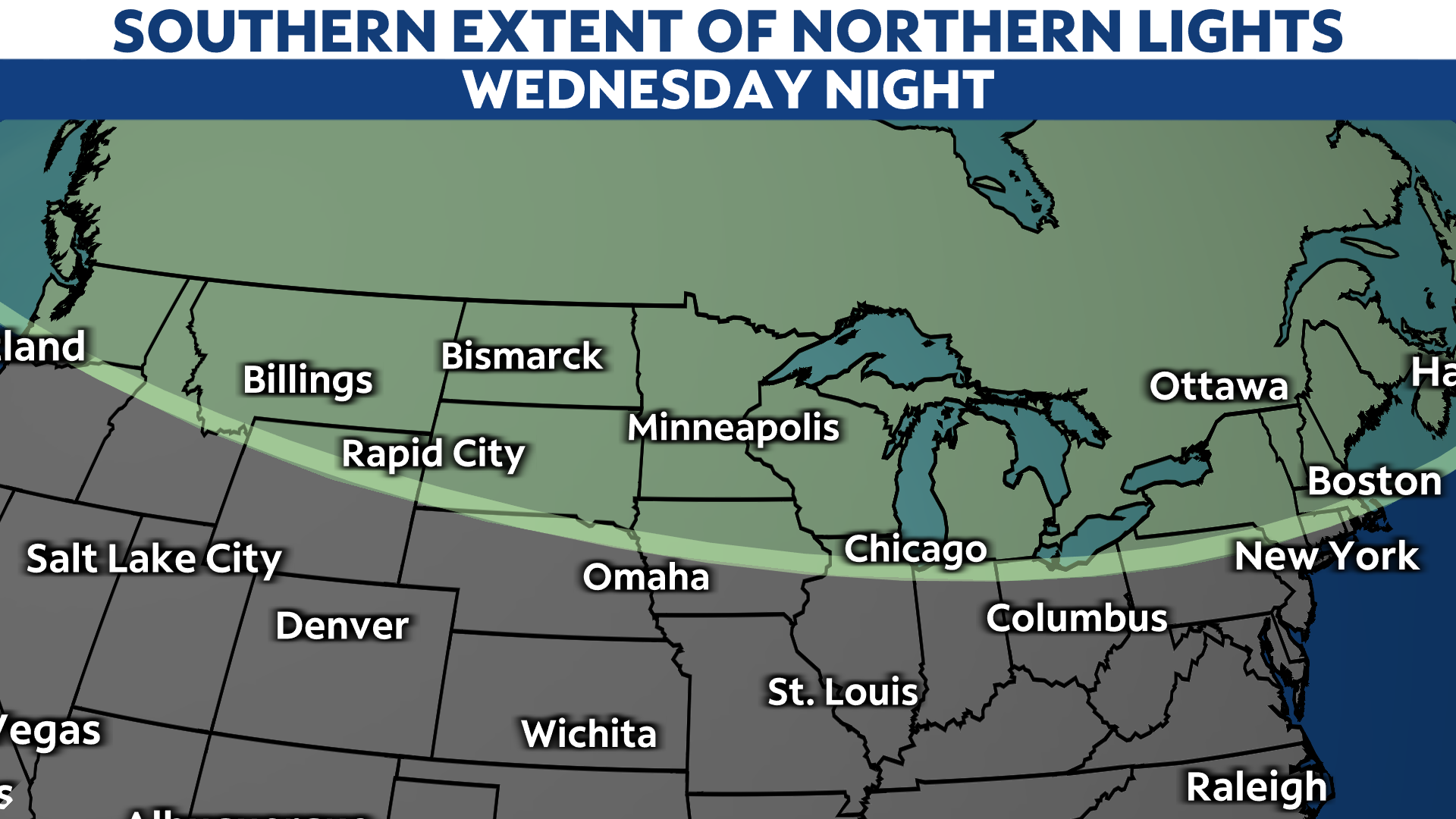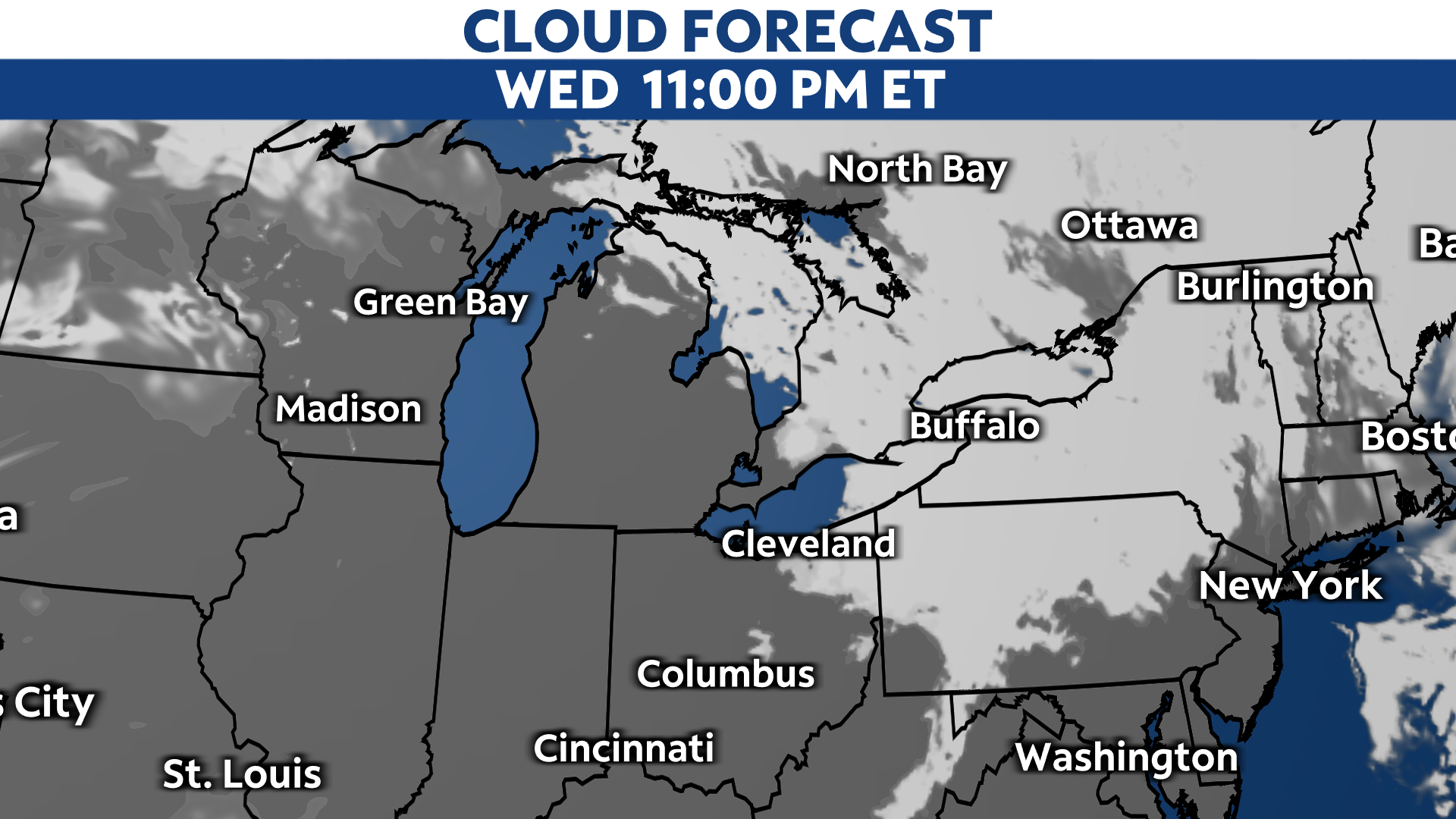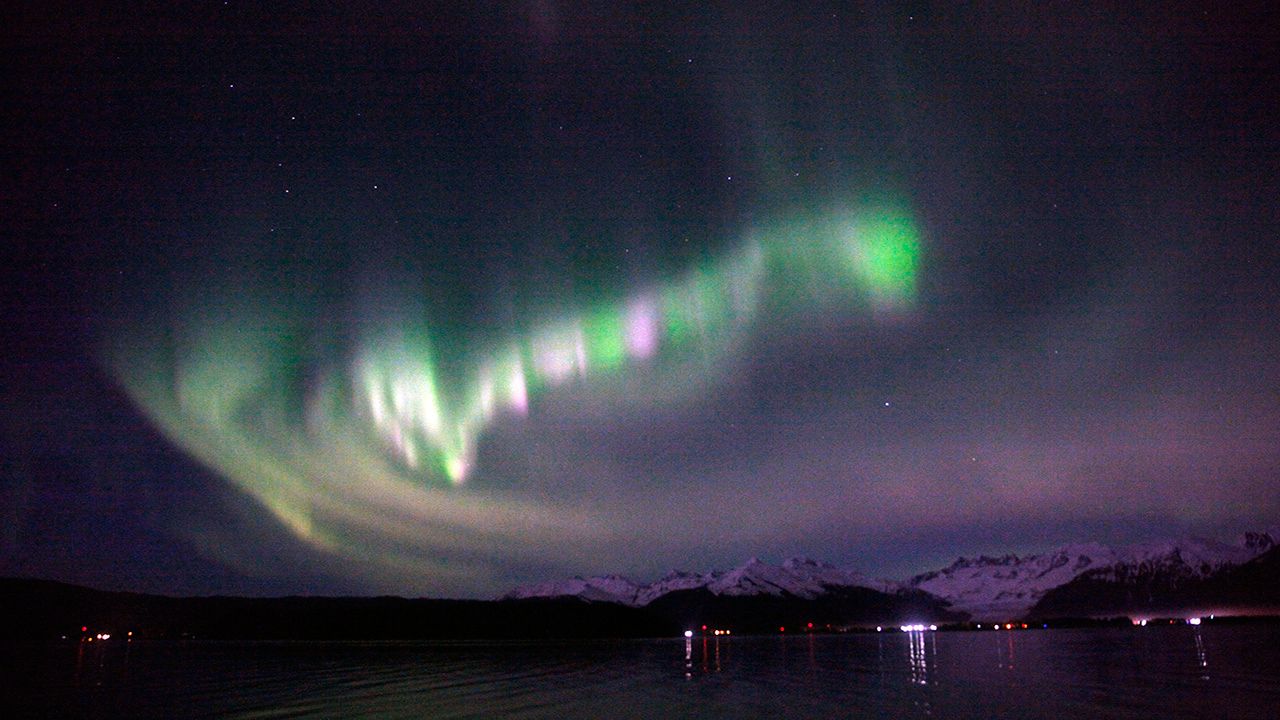The sun sent a burst of energy toward the Earth earlier this week, which brings the potential for the northern lights to show up the next couple of nights.
The Space Weather Prediction Center (SWPC) has a geomagnetic storm watch in place over the next few days. It's expected to peak early Wednesday night, mainly before midnight local time.
While it looks as though the storm will be weak with limited effects it may become strong enough to push up the chances to see the aurora in the northern United States. It's hardly a guarantee, however.
The SWPC's forecast indicates that the northern lights could be visible as far south as the line noted on the map below, although the odds will be better farther north.

Space weather isn't the only factor – you also need to consider the weather here on Earth. Unfortunately for those in the northeastern U.S., clouds will be a problem, covering the sky tonight.
In the Midwest, odds look considerably better when it comes to sky conditions, particularly for Wisconsin through far northern Ohio.

If you want to try your luck, do it sometime between about 8 p.m. and 12 a.m. local time. Get away from city lights, especially to your north. A fairly open view of the northern horizon will also help.
Remember that even if the northern lights do show up, they can be as sudden and erratic as a summer thunderstorm. They may flare up for a few minutes, then be gone the next.
If you're lucky, you may even see an early shooting star from the Geminid meteor shower, which peaks this weekend.



